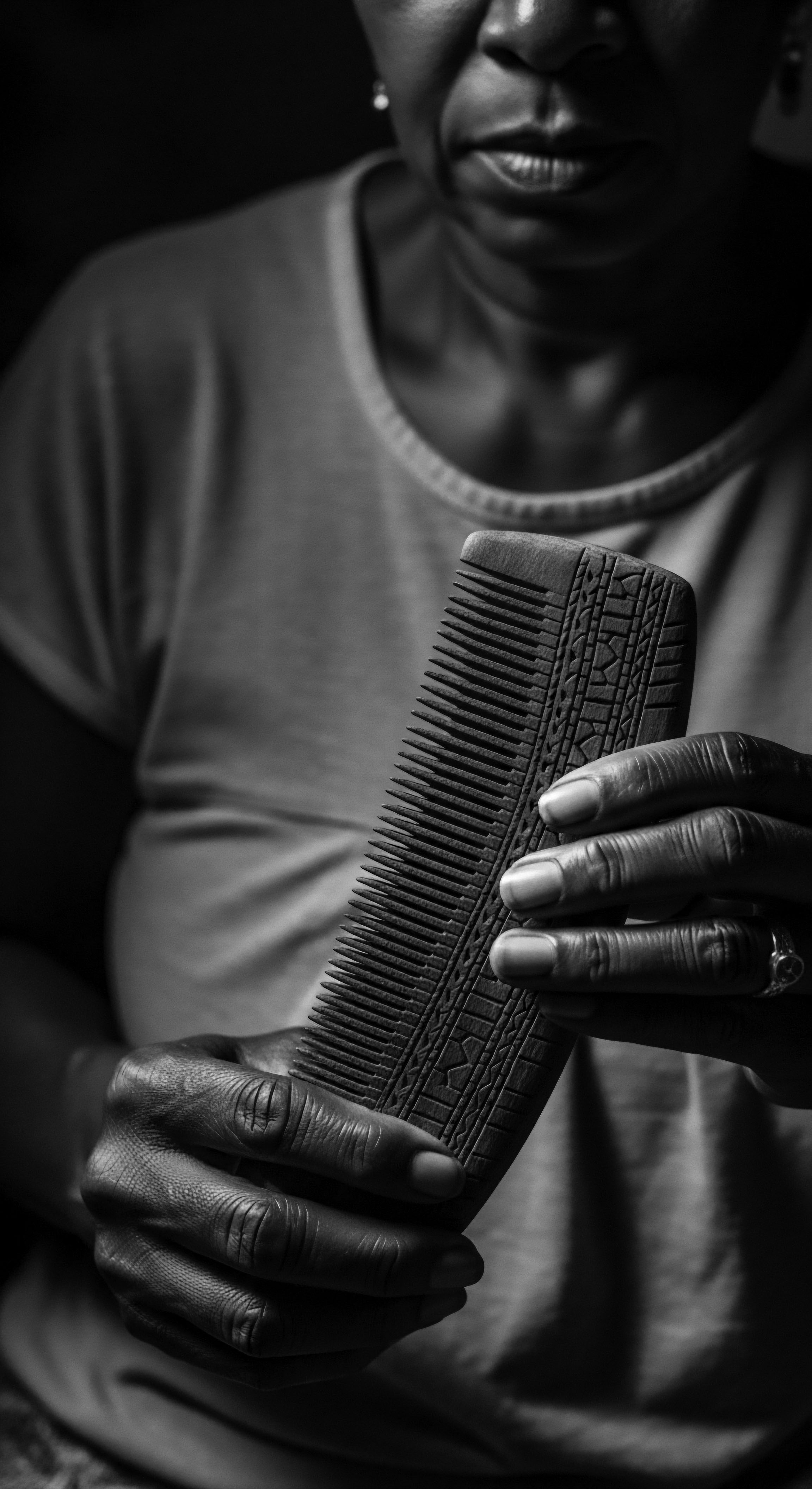
Fundamentals
The very essence of a strand, its intrinsic identity, finds its genesis within the subtle architecture of the Hair Follicle Morphology. This foundational biological structure, nestled just beneath the skin’s surface, acts as the singular source from which each hair shaft emerges. Its form, its precise orientation, and the cellular symphony within dictate the outward appearance of our hair, from the softest wave to the tightest coil. To comprehend the hair follicle’s inherent design is to begin a deep inquiry into the magnificent diversity of human hair, particularly that which honors the legacy of textured strands.
At its simplest, the hair follicle is a miniature organ, a living crucible where keratinocytes, the building blocks of hair, are born and shaped. It is not merely a passive conduit; rather, it is a dynamic biological entity, continuously cycling through phases of growth, rest, and renewal. This perpetual motion ensures a steady supply of new hair, a visible testament to the body’s enduring capacity for regeneration. The hair follicle’s structural makeup includes a bulb, a root sheath (both inner and outer), and a sebaceous gland, each component playing a specific part in the creation and sustenance of the hair shaft.
For those seeking an initial grasp of the hair follicle’s fundamental contribution to hair texture, it is important to recognize its direct causal relationship. The shape of the follicle’s opening, the angle at which it emerges from the scalp, and the specific distribution of cells within its lower regions collectively shape the hair shaft as it grows. A follicle that is more circular in cross-section typically yields straighter hair, while an increasingly elliptical or flattened cross-section gives rise to hair with a greater degree of curl. This elemental understanding serves as the entry point into a broader appreciation of hair’s rich spectrum.
The hair follicle’s intrinsic shape and orientation are the fundamental architects of hair texture, a truth that grounds our appreciation for all curl patterns.
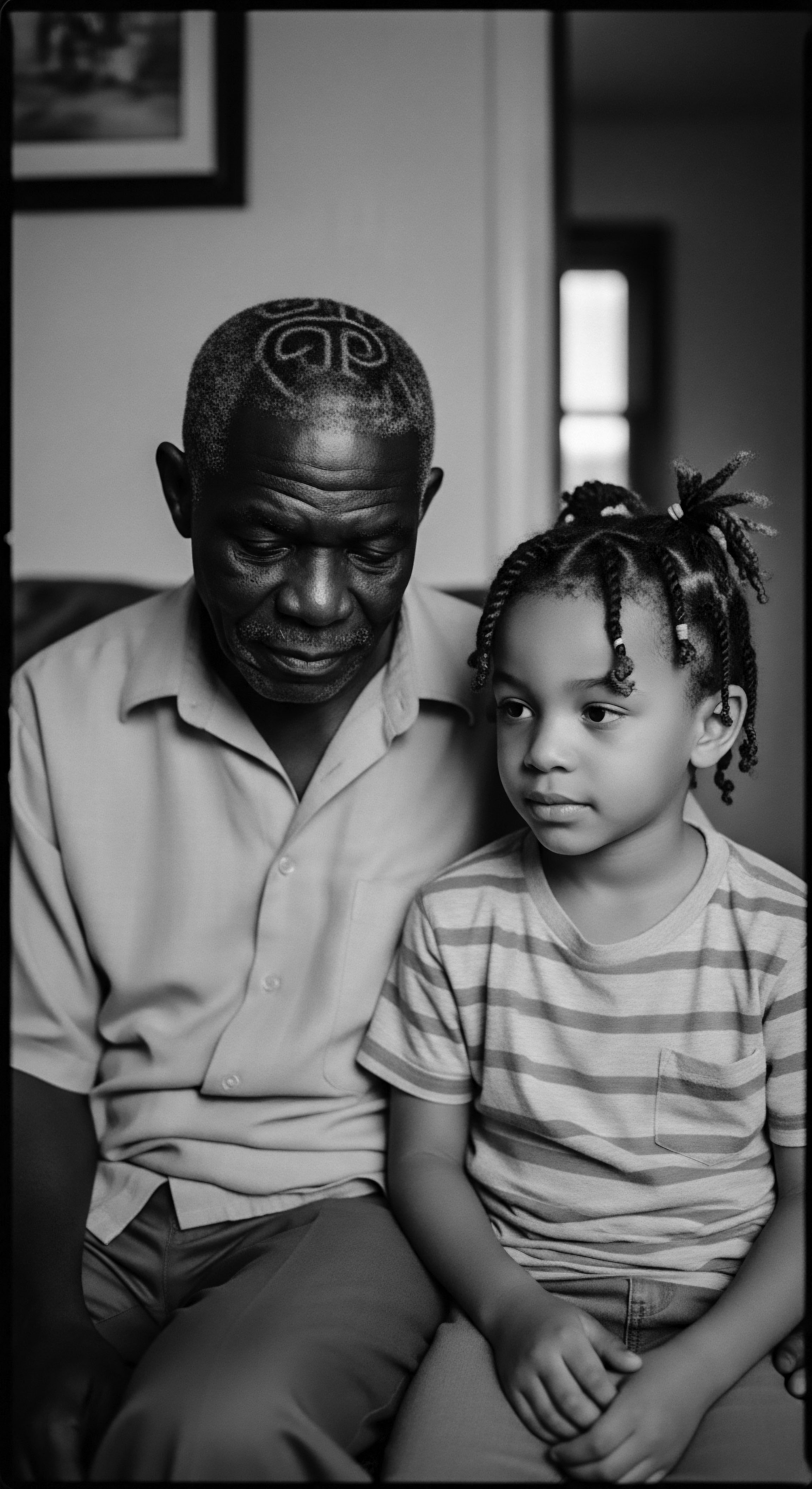
The Genesis of a Strand ❉ Initial Insights
The process of hair creation within the follicle begins deep within the dermal papilla, a small, cone-shaped cluster of specialized cells located at the base of the hair bulb. These cells provide the vital nutrients and signals necessary for hair growth. Surrounding the dermal papilla is the hair matrix, a region of rapidly dividing cells.
As these matrix cells proliferate, they push upwards, gradually keratinizing—a process where they fill with keratin proteins and harden, forming the hair shaft itself. This continuous upward movement, guided by the follicle’s unique contours, dictates the hair’s ultimate shape.
The outer root sheath envelops the growing hair, providing a protective casing, while the inner root sheath, a more delicate structure, directly molds the nascent hair shaft. The precise configuration of these sheaths, particularly the inner root sheath, is profoundly significant for the emergence of textured hair. Their subtle twists and turns, often influenced by genetic predispositions, guide the hair into its characteristic curves and spirals. A sebaceous gland, often connected to the follicle, produces sebum, a natural oil that lubricates and protects the hair and scalp, a factor often considered in traditional hair care rituals.
- Dermal Papilla ❉ A core of specialized cells that initiates and sustains hair growth by providing nourishment.
- Hair Matrix ❉ A zone of rapid cell division, continuously producing the cells that form the hair shaft.
- Inner Root Sheath ❉ A delicate, transient structure that molds the hair shaft as it grows, directly influencing its curl pattern.
- Outer Root Sheath ❉ A protective casing that surrounds the developing hair, extending from the epidermis down to the bulb.
- Sebaceous Gland ❉ Produces sebum, the natural oil that conditions the hair and scalp, a key component in ancestral moisturizing practices.
This initial look at the hair follicle provides a foundational understanding of its biological blueprint. It allows us to recognize that the magnificent variations in hair texture, so deeply revered within Black and mixed-race communities, are not random occurrences but rather the direct expression of this intricate, microscopic architecture. This biological reality sets the stage for a deeper exploration of how the hair follicle’s specific attributes give rise to the extraordinary beauty of textured hair.
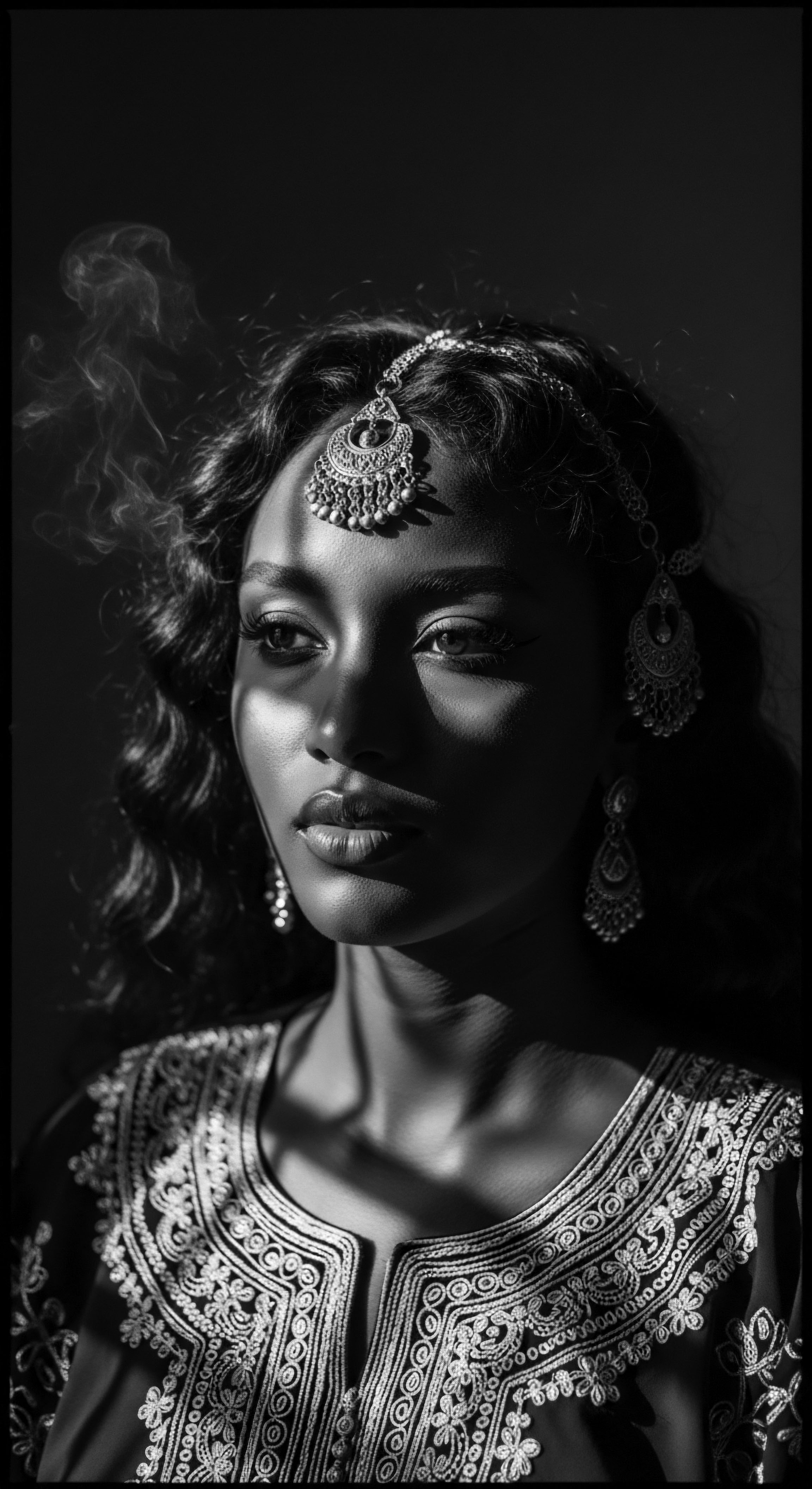
Intermediate
Moving beyond the foundational understanding, the intermediate comprehension of Hair Follicle Morphology invites a closer examination of the intricate cellular and structural components that orchestrate the diverse spectrum of hair textures. For textured hair, especially those magnificent coils and curls that speak to a profound ancestral lineage, the story of the follicle is one of asymmetry and deliberate design. It is within this more detailed view that the biological underpinnings of curl become apparent, revealing why a strand might spiral or zigzag with such distinct personality.
The defining characteristic of follicles that produce textured hair lies in their inherent asymmetry. Unlike the relatively straight, cylindrical follicles often associated with straight hair, those yielding curls and coils possess an elliptical or kidney-shaped cross-section. This shape is not merely a superficial detail; it is a fundamental determinant of the hair shaft’s eventual form.
As the hair cells multiply and keratinize within this uniquely shaped tunnel, they are compressed and shaped into an oval or flattened ribbon-like structure. This non-circular shape causes the hair to twist upon itself as it grows, initiating the curl.
Furthermore, the angle at which the hair follicle emerges from the scalp holds significant sway over the resulting hair texture. Follicles producing straight hair tend to grow perpendicularly to the scalp’s surface. In contrast, follicles responsible for textured hair often emerge at a much sharper, more acute angle, sometimes even lying nearly parallel to the scalp.
This pronounced angle, combined with the elliptical cross-section, creates a helical growth path, encouraging the hair to coil and spiral from its very point of origin. This dual influence of shape and angle provides a more complete explanation for the mesmerizing patterns found across the spectrum of textured hair.
The elliptical shape and acute emergence angle of the hair follicle are key to the magnificent variations observed in textured hair.
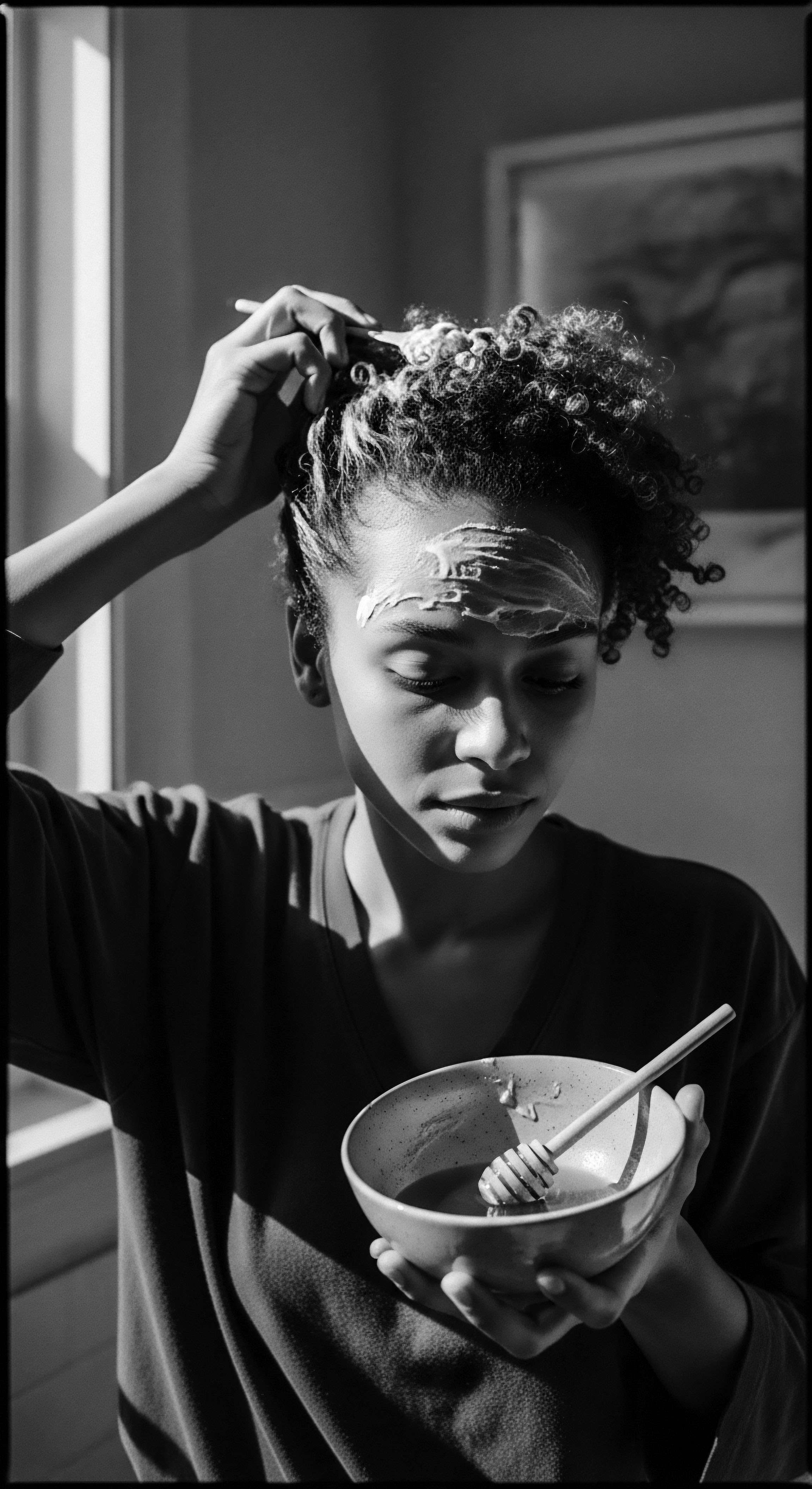
Cellular Architects of Curl
The story of curl extends beyond the macroscopic shape of the follicle to the microscopic dance of its cells. Within the hair matrix, the cells that form the hair shaft do not divide uniformly around the dermal papilla in textured hair follicles. Instead, there is often a differential rate of cell proliferation, meaning cells on one side of the follicle might grow faster or produce more keratin than those on the opposite side.
This uneven growth contributes to the asymmetrical distribution of keratin proteins within the hair shaft, creating tension and causing the hair to bend and twist. This subtle cellular imbalance is a testament to the sophisticated biological mechanisms at play.
Another layer of understanding involves the distribution of different types of keratin. Hair is primarily composed of alpha-keratins, but the precise arrangement and bonding of these proteins, along with the presence of disulfide bonds, are crucial. In textured hair, the disulfide bonds—strong chemical links between sulfur atoms in keratin proteins—are not evenly distributed throughout the hair shaft.
Instead, they tend to cluster more densely on the inner curve of the curl, further stabilizing its coiled configuration. This molecular architecture provides structural integrity to the curl, allowing it to maintain its shape.
The sebaceous glands, while not directly determining curl pattern, play an important role in the care and presentation of textured hair, particularly when considering ancestral practices. Because of the twists and turns of textured hair, sebum, the natural oil produced by these glands, struggles to travel down the hair shaft as efficiently as it does on straight hair. This often results in drier hair, particularly towards the ends, a characteristic long understood and addressed through traditional moisturizing and sealing rituals using natural oils and butters.
- Elliptical Cross-Section ❉ The flattened or kidney-shaped opening of the follicle, which molds the hair shaft into a non-circular form, prompting it to curl.
- Acute Angle of Emergence ❉ The sharp, often near-parallel angle at which the hair emerges from the scalp, contributing significantly to its helical growth.
- Differential Cell Proliferation ❉ Uneven growth rates of keratinocytes within the hair matrix, creating tension and contributing to the hair’s curved shape.
- Disulfide Bond Distribution ❉ Uneven clustering of strong chemical bonds within the hair shaft, providing structural stability to the curl.
Understanding these intermediate aspects of hair follicle morphology allows for a more profound appreciation of the biological ingenuity behind textured hair. It shifts the perception from mere aesthetics to a recognition of sophisticated biological design, directly connecting the physical attributes of textured hair to its deep ancestral roots and the wisdom of care practices developed over generations.
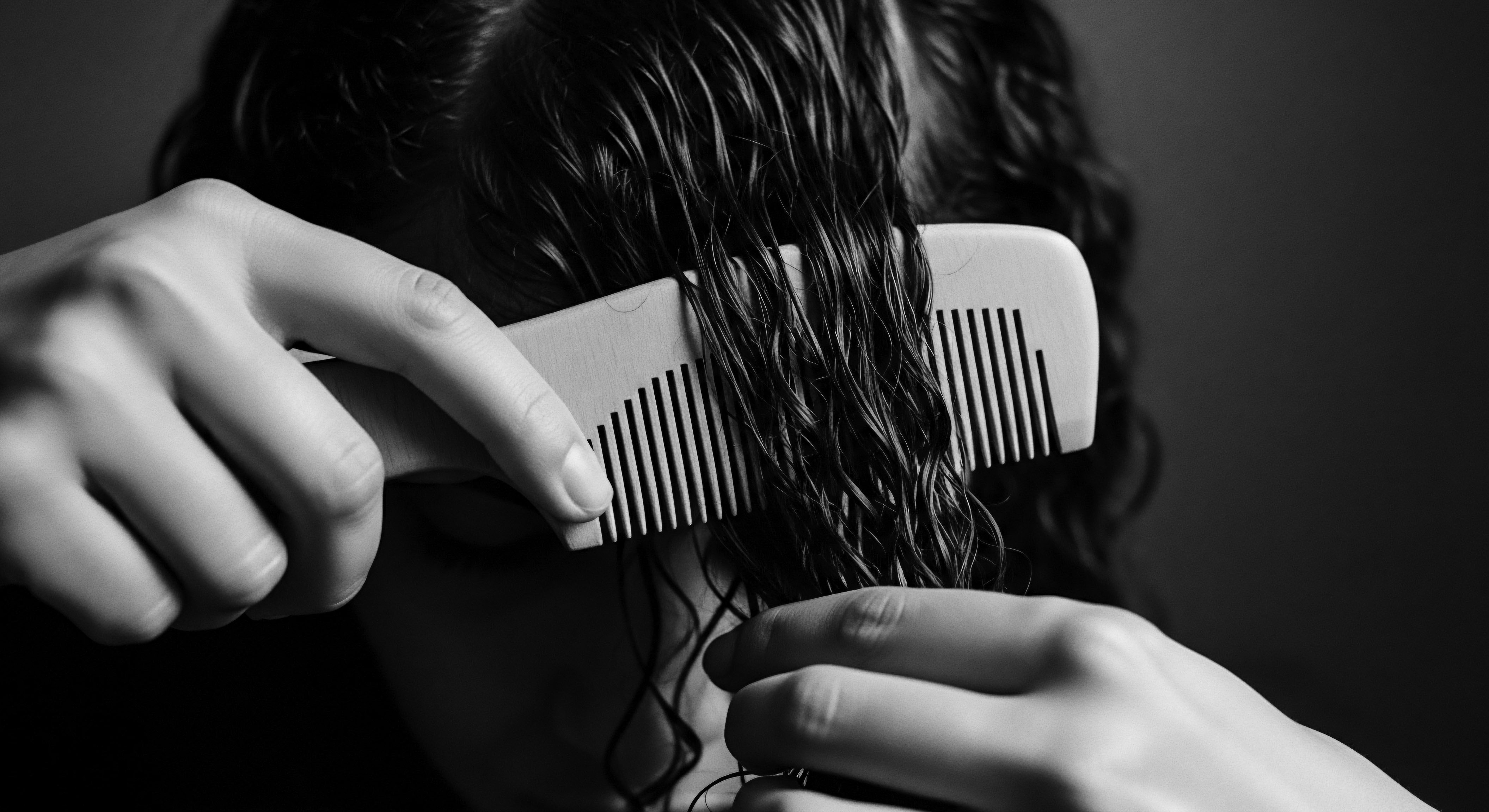
Academic
The academic exploration of Hair Follicle Morphology transcends simplistic definitions, diving into a nuanced understanding of its profound biological complexity and its interwoven relationship with human identity, particularly within the context of textured hair heritage. This deep inquiry reveals the hair follicle not merely as a biological factory but as a dynamic, genetically programmed architect whose form and function dictate the very expression of curl, coil, and wave, serving as a powerful emblem of ancestral lineage and cultural narrative.
From an academic standpoint, the Hair Follicle Morphology is the comprehensive structural and functional delineation of the pilosebaceous unit, with specific emphasis on the shape, orientation, and cellular dynamics that collectively govern the geometry of the emerging hair shaft. Its precise configuration, a testament to evolutionary adaptation and genetic inheritance, directly correlates with the cross-sectional shape of the hair fiber, the angle of its emergence from the scalp, and the differential rates of keratinocyte proliferation and keratinization within the hair matrix. For textured hair, this translates to an unequivocally elliptical or reniform (kidney-shaped) follicular canal, which compels the growing hair shaft to assume a similarly flattened or oval cross-section. This asymmetrical growth, coupled with a highly acute angle of follicular insertion into the dermis, often approaching parallelism with the scalp surface, creates a helical trajectory for the hair shaft, giving rise to its characteristic curl or coil.
The physiological mechanisms underpinning this morphology are intricate. Differential growth rates of cortical cells, the primary structural components of the hair shaft, on opposing sides of the follicle are observed in textured hair. One side of the hair shaft often exhibits a higher rate of cellular division and keratin deposition, creating an inherent tension that forces the hair to bend and spiral. This phenomenon is further compounded by the uneven distribution of disulfide bonds, the robust covalent linkages between cysteine residues in keratin proteins.
These bonds, more concentrated along the inner curvature of the curl, provide the structural rigidity necessary to maintain the hair’s coiled configuration. The molecular architecture of the hair follicle, therefore, orchestrates the macroscopic expression of curl, a complex interplay of cellular kinetics and protein chemistry.
Hair follicle morphology, particularly its elliptical form and acute angle of emergence, serves as the biological blueprint for textured hair, reflecting deep genetic and ancestral imprints.
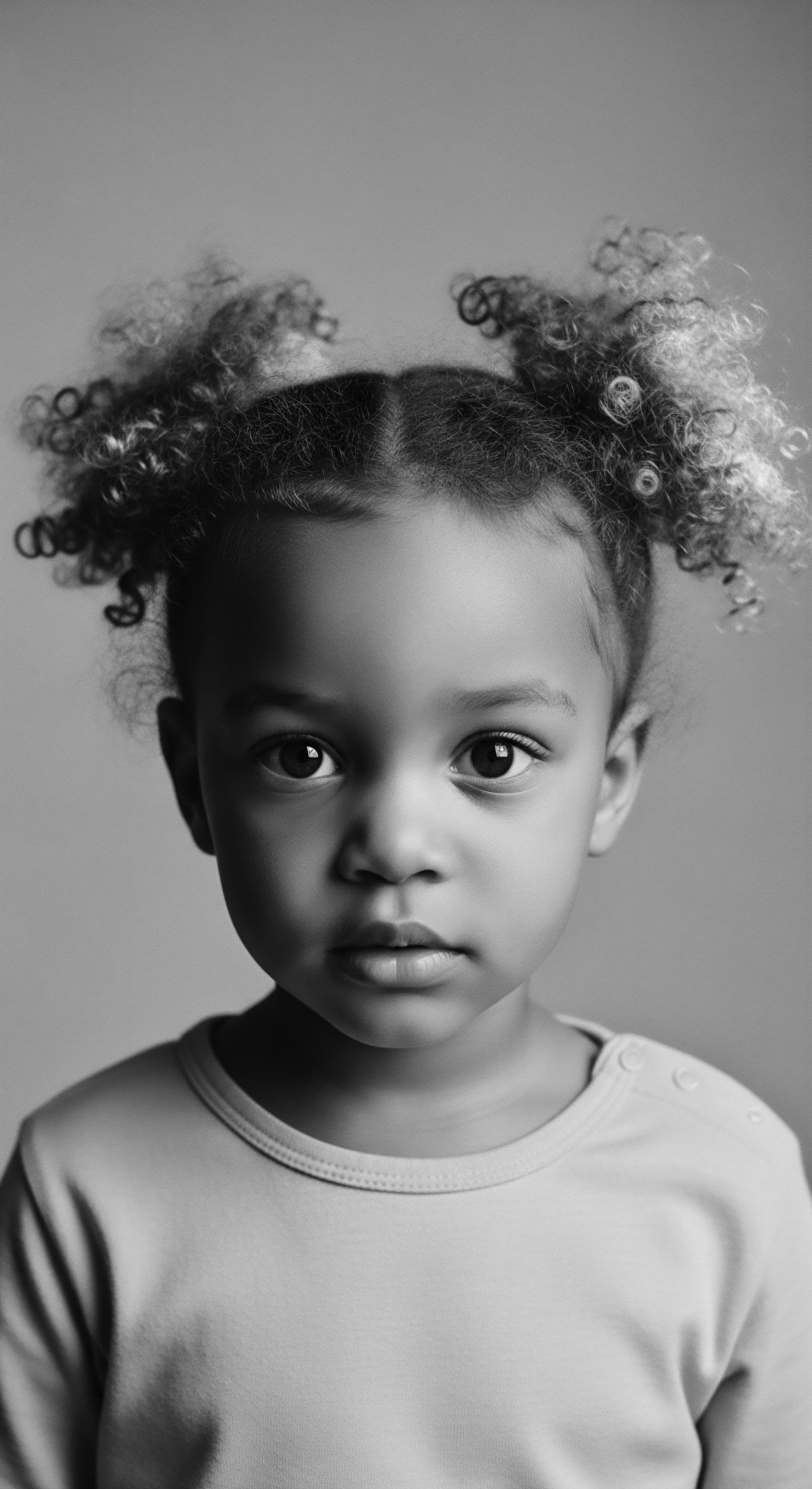
Interconnected Incidences ❉ Biology, Culture, and Identity
The biological realities of hair follicle morphology for textured hair extend far beyond the microscopic realm, profoundly influencing societal perceptions, cultural practices, and individual identity across the diaspora. The unique visual characteristics of textured hair, stemming directly from its follicular origins, have historically been a site of both profound reverence and systemic oppression. This duality is starkly illuminated by historical decrees that sought to control or diminish the visibility of textured hair, directly targeting its inherent beauty and the identity it represented.
Consider the Tignon Laws enacted in Spanish colonial Louisiana in 1786. This decree, issued by Governor Esteban Rodríguez Miró, mandated that free women of color, renowned for their elaborate and distinctive hairstyles, cover their hair with a ‘tignon’ or head-wrap. The official justification was to distinguish them from white women, but the underlying intention, as historians and cultural scholars widely contend, was to suppress their perceived allure, social standing, and economic influence. The visual prominence of their textured hair, styled with artistry and pride, was seen as a challenge to the established racial hierarchy.
This historical example powerfully demonstrates how the very morphology of textured hair, leading to its unique aesthetic expression, became a focal point for legislative control and social subjugation. The physical manifestation of the hair follicle’s design was thus directly linked to issues of freedom, identity, and systemic discrimination. (Frey, 1994).
The impact of such historical attempts to control hair morphology and its cultural expression continues to resonate. The societal pressures to conform to Eurocentric beauty standards, often requiring chemical or mechanical alteration of textured hair to mimic straighter forms, represent a direct consequence of this historical legacy. These practices, while seemingly personal choices, are deeply rooted in a collective memory where the natural expression of hair follicle morphology was deemed “unprofessional” or “unacceptable.” The very act of understanding the biological basis of textured hair through the lens of follicle morphology thus becomes an act of reclamation and affirmation.
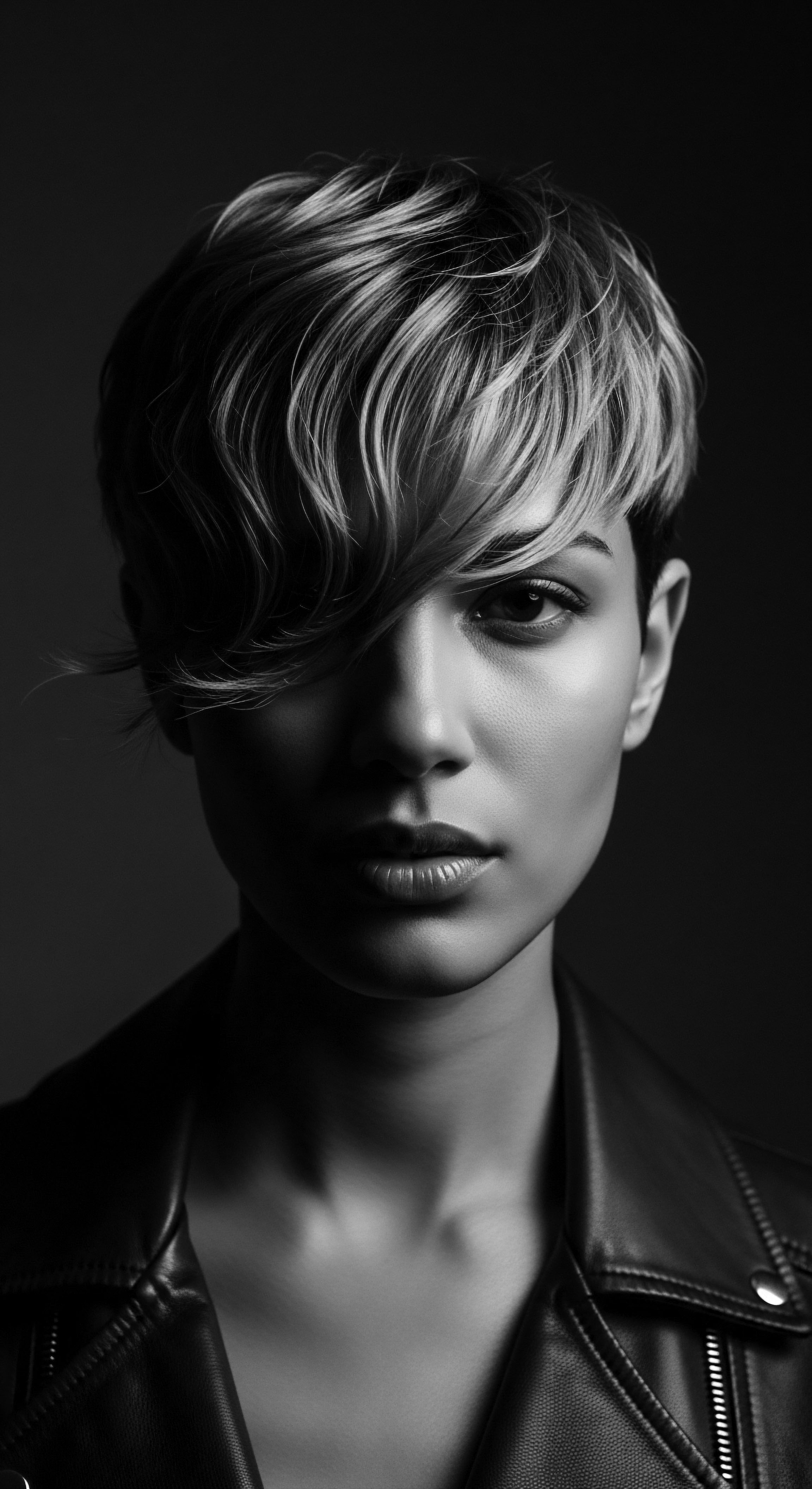
Societal Repercussions and Ancestral Wisdom
The historical trajectory of textured hair, shaped by its unique follicle morphology, has also given rise to a wealth of ancestral wisdom regarding hair care. Traditional practices, often passed down through generations, instinctively addressed the specific needs arising from the hair’s coiled structure and the sebaceous gland’s challenges in lubricating the entire shaft. Practices such as oiling, braiding, twisting, and protective styling were not merely aesthetic choices; they were sophisticated responses to the biological realities of textured hair morphology, aimed at retaining moisture, minimizing breakage, and promoting scalp health. These practices, developed long before the advent of modern trichology, stand as powerful evidence of an embodied, empirical understanding of hair biology.
The academic investigation into hair follicle morphology also extends to the genetic underpinnings of hair texture. While specific genes responsible for all aspects of hair texture are still being mapped, research has identified several genetic loci associated with curl pattern, thickness, and hair color. For instance, the EDAR gene, a well-studied example, is linked to hair thickness and straightness, with specific variants more prevalent in East Asian populations.
While less specific genes are definitively linked to the extreme curl patterns seen in many African and diasporic populations, the polygenic nature of hair texture suggests a complex interplay of multiple genetic factors. Understanding these genetic influences on follicle morphology offers a pathway to appreciating the deep ancestral roots of hair diversity.
Moreover, the field of psychodermatology has begun to explore the profound psychological impact of hair follicle morphology and its resulting hair texture on self-perception and mental well-being. For individuals with textured hair, the journey of accepting and celebrating their natural hair, often in defiance of societal pressures, can be a powerful act of self-affirmation. This journey is intimately connected to understanding the inherent beauty and biological distinctiveness that arises from their hair follicle’s unique structure. The academic inquiry into morphology thus bridges biology, history, sociology, and psychology, offering a holistic perspective on the profound significance of hair.
| Historical Context/Practice Tignon Laws (1786) ❉ Mandated head coverings for free women of color in Louisiana. |
| Connection to Hair Follicle Morphology A societal attempt to diminish the visible aesthetic distinction of textured hair, which naturally possessed volume and unique styling capabilities due to its elliptical follicle and acute emergence. |
| Modern Scientific Interpretation Societal response to the inherent visual prominence and cultural power of hair resulting from its unique follicular structure. This demonstrates the social construction of beauty standards in opposition to natural hair morphology. |
| Historical Context/Practice Traditional Oiling & Sealing ❉ Ancestral practices using plant oils (e.g. shea butter, coconut oil) to moisturize hair. |
| Connection to Hair Follicle Morphology Addressed the challenge of sebum distribution on highly coiled hair, a direct consequence of the hair shaft's helical path emerging from an elliptical follicle. Sebum struggles to travel down twisted strands. |
| Modern Scientific Interpretation Validates the need for external lipid application to compensate for limited natural lubrication, directly linked to the hair's structural geometry determined by the follicle. |
| Historical Context/Practice Protective Styling (Braids, Twists) ❉ Ancient techniques to safeguard hair from environmental damage and breakage. |
| Connection to Hair Follicle Morphology Minimized mechanical stress and friction on fragile, tightly coiled strands, which are prone to breakage at their many points of curvature due to the irregular cross-section and growth pattern dictated by the follicle. |
| Modern Scientific Interpretation Reduces tensile stress and minimizes friction points on hair fibers that have an inherently weaker tensile strength and greater susceptibility to breakage due to their elliptical cross-section and numerous bends. |
| Historical Context/Practice The enduring wisdom of ancestral hair care practices directly addresses the unique needs arising from the biological reality of textured hair follicle morphology. |
The study of hair follicle morphology, particularly in textured hair, thus represents a critical intersection of biology, anthropology, and cultural studies. It provides not only a scientific explanation for the diverse expressions of human hair but also a powerful lens through which to understand historical injustices, celebrate enduring cultural resilience, and affirm the intrinsic beauty and value of every strand, born from its unique follicular blueprint. This academic depth fosters a profound appreciation for the human experience, as expressed through the intricate biology of hair.
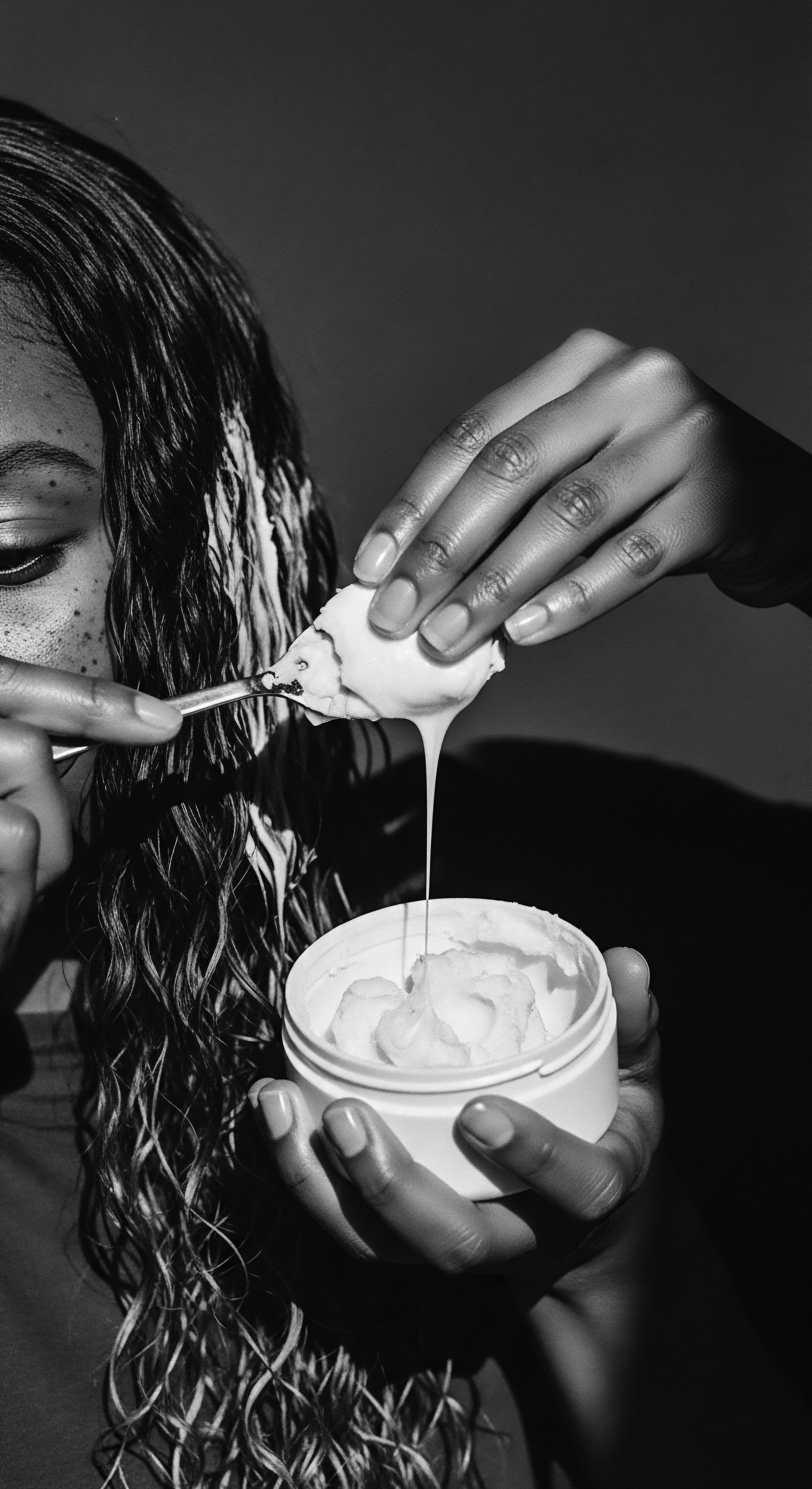
Reflection on the Heritage of Hair Follicle Morphology
As we close this inquiry into the intricate world of Hair Follicle Morphology, we stand at a precipice where science bows to the sacred, and biology whispers ancestral tales. The journey through the hair follicle’s structure, from its foundational elements to its academic complexities, has consistently reaffirmed a central truth ❉ the very architecture of our hair is a living archive, a tangible link to generations past. For those with textured hair, this biological blueprint is more than a scientific curiosity; it is a profound testament to an enduring heritage, a legacy etched in every curve and coil.
The ‘Soul of a Strand’ ethos reminds us that hair is not merely an appendage but a vibrant expression of identity, resilience, and spirit. The unique morphology of textured hair follicles, producing strands that defy linear expectations, mirrors the rich, non-linear narratives of Black and mixed-race communities. Each twist, each bend, speaks of journeys taken, wisdom gathered, and beauty sustained against tides of challenge. This understanding invites a reverence for what grows naturally from our scalps, recognizing it as a gift from the source, a continuation of an unbroken lineage.
To honor the hair follicle’s inherent design is to honor the wisdom of those who came before us, who instinctively understood the needs of textured hair long before microscopes revealed its secrets. Their hands, guided by intuition and love, crafted rituals of care that nurtured these unique strands, creating a heritage of practices that resonate deeply even today. The ancient oils, the protective styles, the communal grooming rituals—all were responses to the biological reality of the hair follicle, a testament to an ancestral intelligence that saw beauty and strength in every natural form.
Looking forward, our deepened understanding of hair follicle morphology empowers us to celebrate the natural hair journey with greater conviction. It encourages us to discard notions of “good” or “bad” hair, replacing them with a recognition of inherent diversity and biological splendor. This knowledge becomes a tool for liberation, allowing us to shed the weight of imposed standards and embrace the authentic expression of our hair, rooted in its unique follicular origins. The unbound helix of textured hair, springing from its distinct follicle, continues to write new chapters of identity, pride, and communal connection, echoing the enduring soul of every strand.
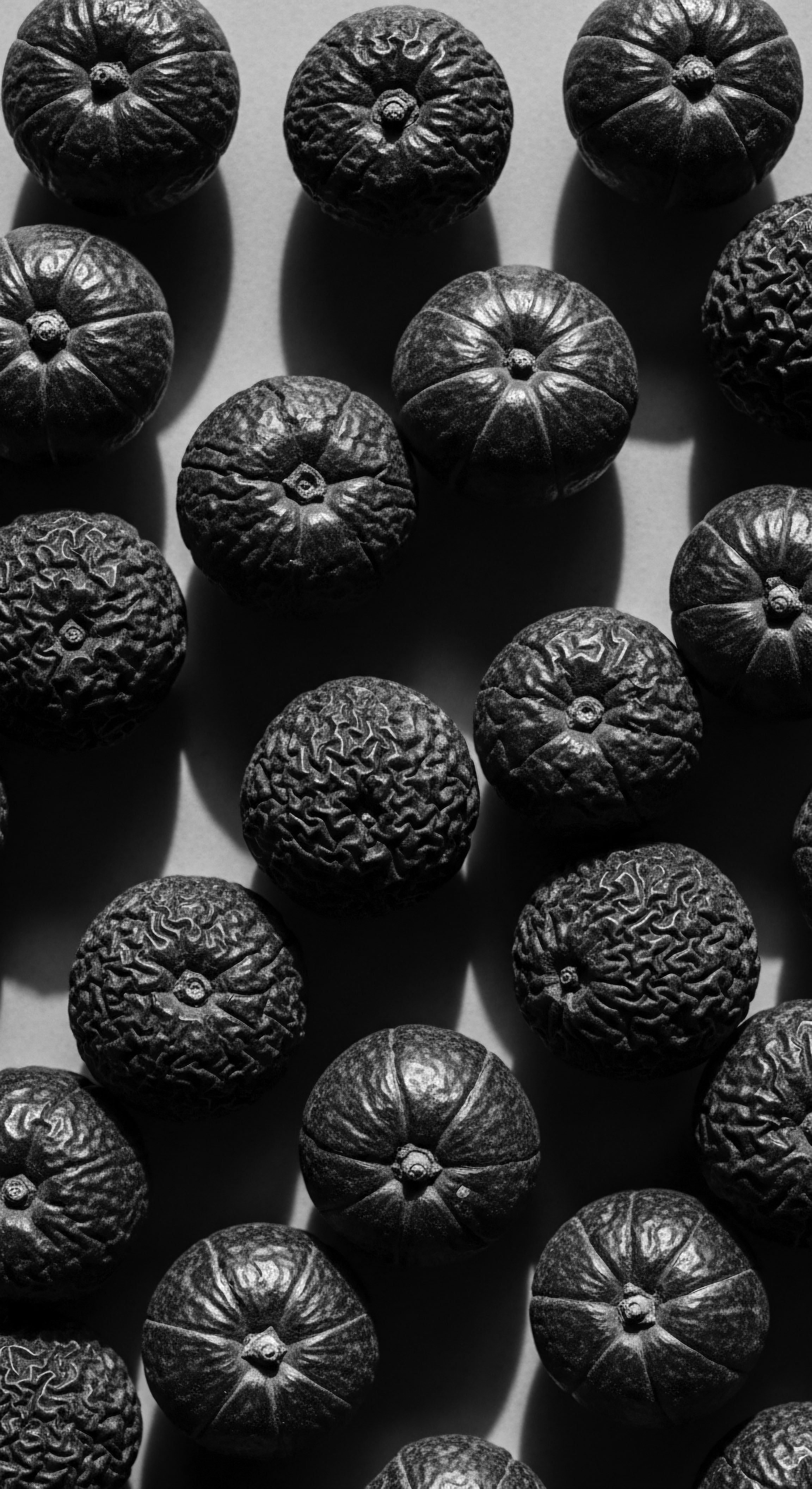
References
- Frey, S. (1994). The Tignon Laws ❉ A Cultural and Historical Examination. Louisiana State University Press.
- Robbins, C. R. (2012). Chemical and Physical Behavior of Human Hair. Springer Science & Business Media.
- Dahl, S. (2013). Hair ❉ A Cultural History. Bloomsbury Academic.
- Goldsmith, L. A. & Lazarus, G. S. (Eds.). (1991). Biochemistry and Physiology of the Skin (Vol. 1). Oxford University Press.
- Tobin, D. J. (2006). Hair in Toxicology ❉ An Important Biological Specimen. Royal Society of Chemistry.
- Franbourg, A. Hallegot, P. Baltenneck, F. Freyssinet, J. M. & Bouillon, C. (2003). Current Research on Ethnic Hair. Journal of the American Academy of Dermatology, 48(6), S115-S119.
- Pitchford, D. E. (2014). African American Hair ❉ A History of Style, Culture, and Identity. Praeger.
- Sherrow, V. (2006). Encyclopedia of Hair ❉ A Cultural History. Greenwood Press.
- Paus, R. & Cotsarelis, G. (2008). The Biology of Hair Follicles. New England Journal of Medicine, 359(12), 1279-1288.
